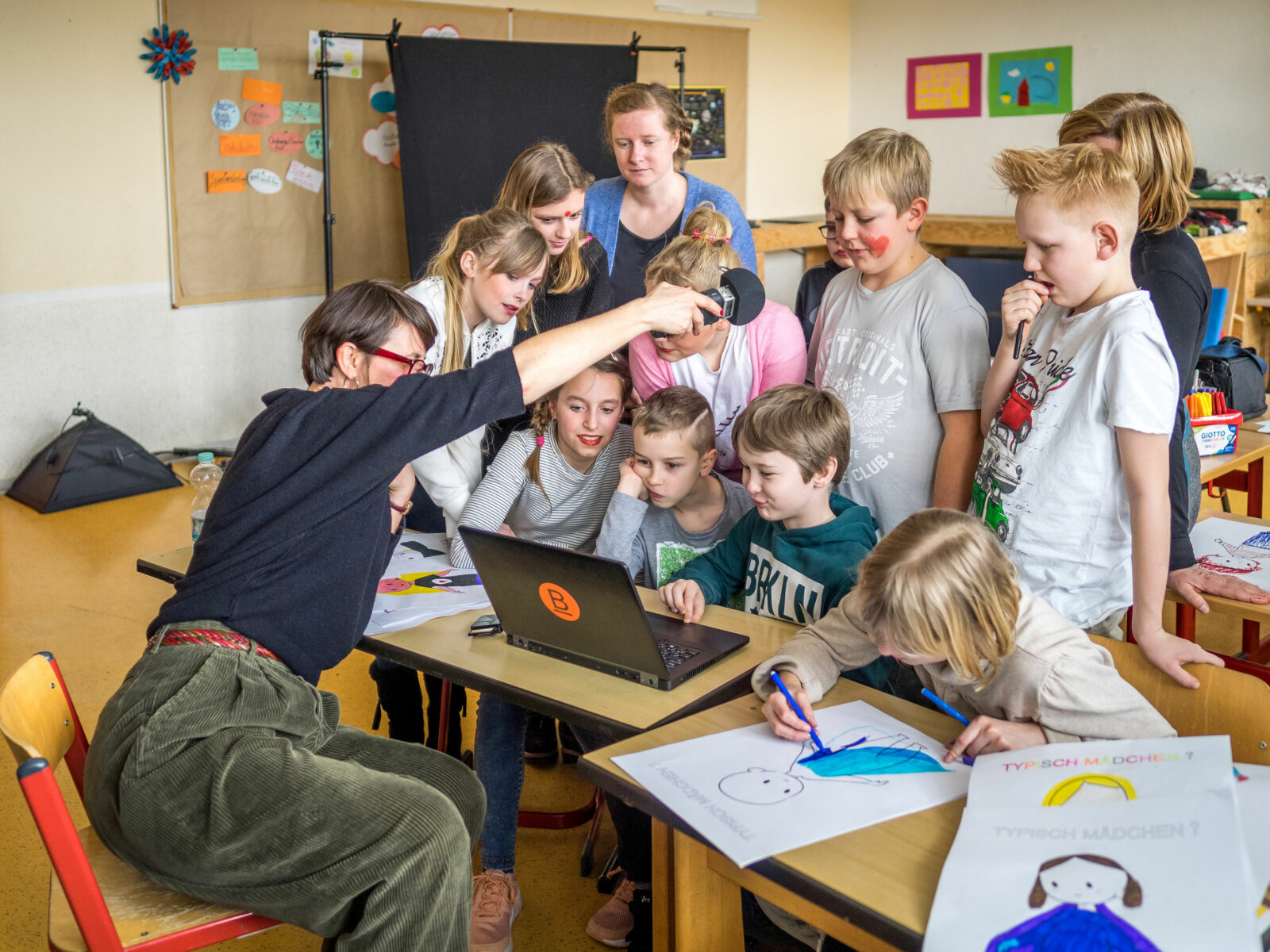This 20-minute radio play is about the Bauhaus as a school from the students’ point of view. The radio play is based on a two-year research project by the Liborius and Philanthropinum grammar schools in Dessau, in the course of which song texts, compositions and dialogues on the subject of the Bauhaus were created in various workshops. These were the basis for a libretto about the Bauhaus, which was rehearsed and performed in a second step with a children’s choir, school band and student soloists. The pupils reflected on their research and rehearsal work at the microphone. Researcher Katja Klaus and various speakers guide the listener through a colourful audio collage of information, reflections and associations about the Bauhaus institution.
Radio plays

As a radio playwright, I was particularly interested in creating an acoustic version of the vast world of the Bauhaus and making it possible for children to experience complex interrelationships in a playful way.
These sound collages were created in collaboration with pupils from Dessau-Roßlau. Following their exploration of the respective work and their own experiences experimenting with materials, light, space and creative techniques, the children themselves speak and report on their impressions.
The audio plays were recorded in German.
Bauhaus als Schule
Siedlung Dessau-Törten
How can you create affordable and attractive living space? This audio play provides the Bauhaus answer to this question, which is still pressing today: with precisely timed housing construction using prefabricated components. Between 1926 and 1928, a housing estate with over three hundred modern terraced houses was built in Dessau-Törten according to the assembly line principle, which was later expanded to include three-storey pergola houses with optimised flat layouts.
Oskar Schlemmer
In this audio collage, the pupils of Year 4 at the Evangelische Grundschule Dessau (Protestant Primary School Dessau) explore the life and work of Oskar Schlemmer – from their own perspective. As a basis, they worked on two project days on the Bauhaus stage and in the workshop in the Bauhaus building. They were accompanied by radio playwright Angi Harrer-Vukorep, actress Anke Stoppa and Torsten Blume, research assistant at the Bauhaus Dessau Foundation.
László Moholy-Nagy
The polyphonic sound collage on the life and work of László Moholy-Nagy incorporated the pupils’ studies and their experiences experimenting with light and materials. The children explored the technique of the photogram and reported on their experiences and insights. The moment of their own practical experience thus becomes the focus of attention and forms the content of the audio piece.
Marianne Brandt
In the audio pieces, you will learn how the Bauhaus became Marianne Brandt’s artistic home and how she had to fight for her equal rights here. Marianne Brandt worked mainly in the metal workshop, took over its management for a time and revolutionised the design of lighting fixtures.
Gertrud Arndt
In the audio pieces, you will learn how the Bauhaus became an artistic home for Gertrud Arndt and how she had to fight for her equal rights here. Gertrud Arndt studied in the weaving workshop at the Bauhaus in Weimar and became a pioneer of conceptual photography with her staged self-portraits during her time in Dessau.
